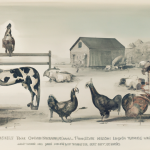Advanced Shelter Building: Techniques for Comfort and Protection in Any Environment
When it comes to survival situations, having a sturdy and well-built shelter can mean the difference between life and death. While basic shelters provide essential protection, advanced shelter building techniques are crucial for long-term survival in challenging environments. In this article, we will explore some advanced shelter building techniques that will not only keep you safe but also provide comfort in the most extreme situations.
1. Insulation
Insulation is a key factor in maintaining a comfortable temperature within your shelter. In cold environments, consider layering your shelter with insulating materials such as dry grass, leaves, or even animal fur. These natural insulators trap heat effectively and help retain warmth. Additionally, constructing your shelter in a location that is protected from cold winds will significantly reduce heat loss.
For hot and sunny climates, focus on providing shade and increasing airflow within your shelter. Utilize foliage or tarps to create shade and incorporate ventilation points to allow cool air to circulate. Ensuring proper insulation will help regulate the temperature within your shelter, making it more livable regardless of the external conditions.
2. Elevated Shelter
One advanced technique to consider is building an elevated shelter. By elevating your shelter off the ground, you can avoid dampness, cold seeping in from the earth, and potential insect or animal intrusions. Use sturdy branches or logs to create a raised platform, and then construct your shelter on top of it. This method also provides additional safety from flooding and is particularly useful in marshy or rainy environments.
3. Waterproofing
To protect yourself from the elements, it’s essential to waterproof your shelter. Use a combination of tarp, natural materials like bark or animal hides, and even trash bags to create a waterproof barrier. Be sure to secure the materials tightly so that rainwater cannot seep through. Creating an angled roof will help water run off more efficiently, preventing pooling and potential leaks.
Another useful technique is digging a trench around your shelter to divert water away from it. This can be particularly effective in heavy rain or flooding situations. Remember, moisture can lead to hypothermia, so waterproofing should never be overlooked.
4. Camouflage
When situations require you to stay hidden, camouflage can be a lifesaver. Use natural materials such as branches, leaves, or mud to blend your shelter into the surrounding environment. This will make your shelter less visible to curious eyes, whether they belong to humans or animals. In survival scenarios, staying unnoticed can be crucial for your safety and long-term survival.
5. Advanced Fireproofing
While fire can provide warmth, protection, and the means to cook food, it can also pose significant risks if not handled properly. To improve fire safety within your shelter, create a fireproof zone using rocks or an elevated surface. Clear away any flammable materials such as dry leaves, grass, or branches from the area immediately surrounding your fire pit. This precaution will reduce the risk of accidental fires and ensure your shelter remains safe.
Conclusion
Building an advanced shelter is an essential skill for anyone interested in homesteading, survival, or self-reliance. These techniques will provide comfort and protection in various environments, allowing you to thrive even in the most challenging circumstances. Remember, preparation is key, and investing time in learning and practicing these advanced shelter building techniques can potentially save your life.




GIPHY App Key not set. Please check settings